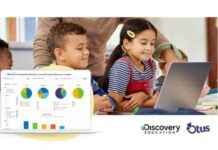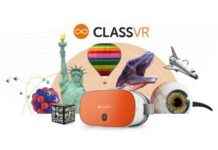When it comes to education, utilizing digital tools has become increasingly important in enhancing learning and helping students develop essential skills. Many educators are finding creative ways to incorporate these tools into their teaching strategies to engage students and bring learning to life.
One example is McKenna Akane, a new STEM teacher in Montana, who uses Bee-Bots to engage students in hands-on, immersive learning experiences. STEM kits like Bee-Bots have proven to be valuable in elementary school settings, allowing students to explore coding and robotics in a fun and age-appropriate way.
Jon Oosterman, an educator at the Van Andel Institute for Education, recommends Teachable Machine, a tool that allows users to train models to recognize images, sounds, and poses. This tool helps students understand artificial intelligence in a stress-free and easy-to-understand manner, making it a valuable resource for integrating AI learning into various subjects.
Brent Grahn, a high school math teacher in Minnesota, utilizes Geogebra, a platform that offers graphing and analysis tools with pre-made activities. Geogebra provides visual and tangible representations of math concepts, making it easier for students to grasp complex mathematical ideas and engage with the material in a meaningful way.
Rita Mortenson, an educational technology coach in Wisconsin, uses Google Arts and Culture to bring art and cultural experiences to life for students. With over 1,600 experiments and immersive experiences, Google Arts and Culture allows students to explore art, music, and history in a unique and interactive way, fostering a deeper appreciation for different cultures and time periods.
Additionally, high school educator Lynn Thomas created an Escape Room mission using Brightspace, a platform that allows teachers to gamify learning and create engaging challenges for students. By incorporating an around-the-world theme into the Escape Room mission, Thomas was able to provide students with a diverse range of subject matter and material to explore while challenging their problem-solving skills and encouraging collaborative learning.
These examples highlight the innovative ways in which educators are leveraging digital tools to enhance learning experiences and engage students in meaningful ways. By incorporating these tools into their teaching practices, educators can create dynamic and interactive learning environments that foster creativity, critical thinking, and collaboration among students.
Laura Ascione, the Editorial Director at eSchool Media, encourages educators to share their innovative teaching strategies and resources by reaching out to submissions@eschoolmedia.com. By collaborating and sharing ideas, educators can continue to inspire and support one another in the integration of digital tools in education.







